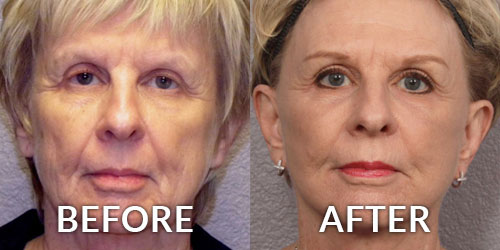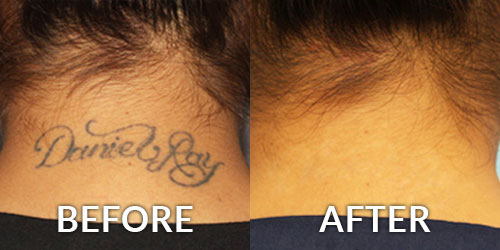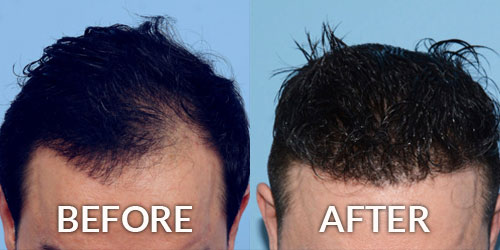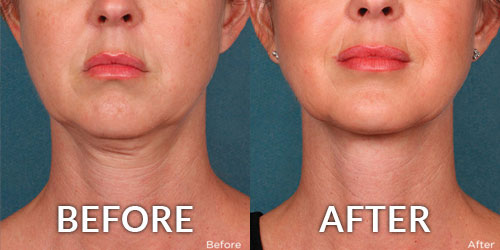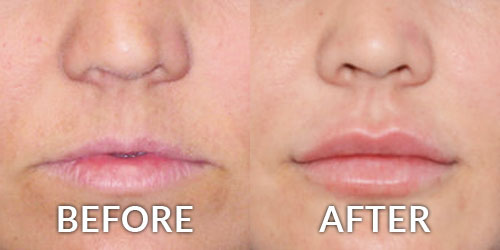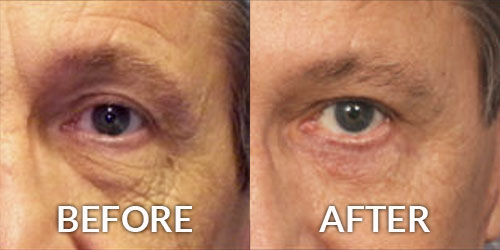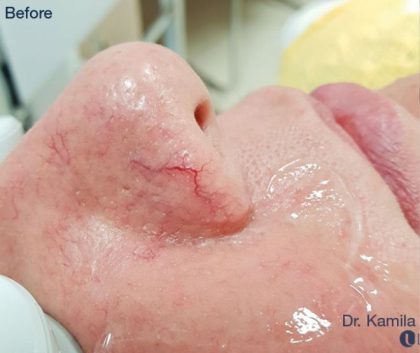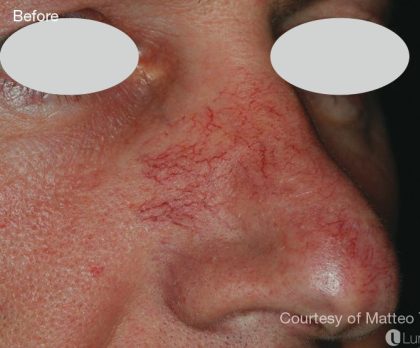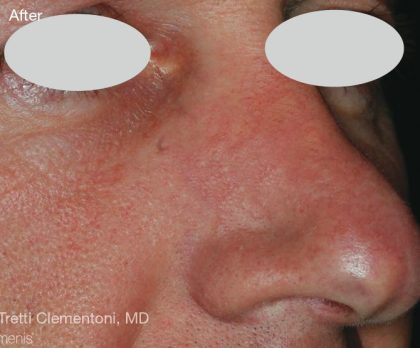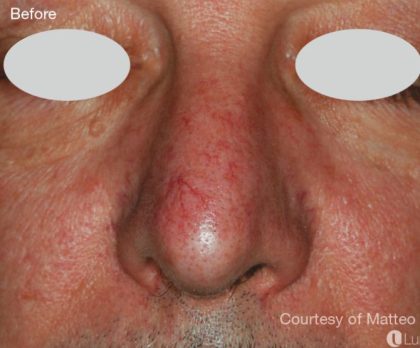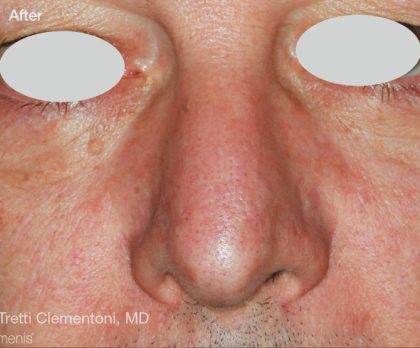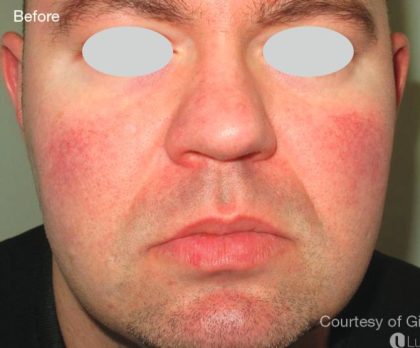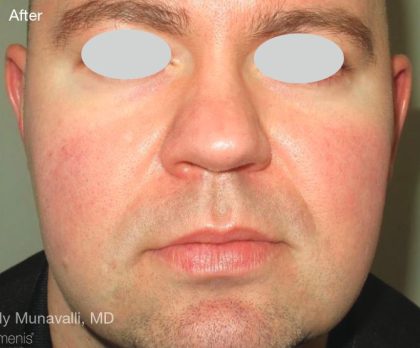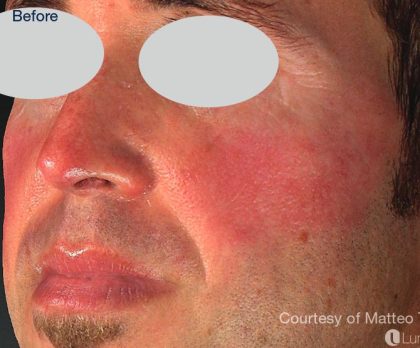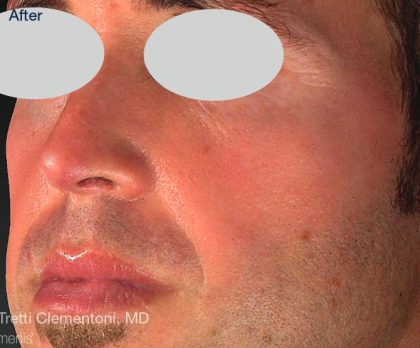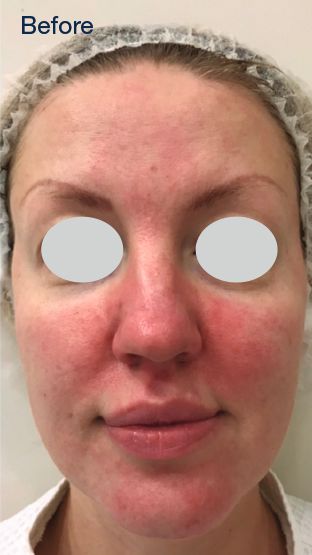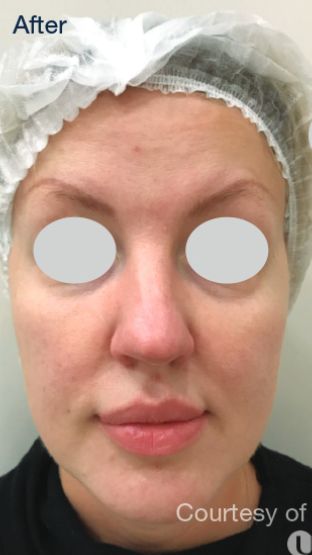Veins
Consultations offered at our two convenient locations in Phoenix and Scottsdale

Veins are an essential part of the human circulatory system. They are responsible for carrying blood from the heart to the rest of the body. There are different types of veins, including superficial veins, deep veins, and pulmonary veins. Superficial veins are the veins closest to the skin’s surface and most often need treatment. Many people have issues with veins when they are visible and don’t look the way they should. Patients who experience problems with visible capillaries (such as those with rosacea, varicose veins, or spider veins) have options for treatment.
Contents
- 1 Before and After Photos
- 2 Body Veins
- 3 Face Veins
- 4 Varicose Veins
- 5 Spider Veins
- 6 Small Capillaries
- 7 Before and After Photos
- 8 Vein Treatment
- 9 Benefits of Vein Treatment
- 10 Ideal Candidates for Vein Therapy
- 11 Personal Consultation at Phoenix Skin
- 12 Preparation
- 13 Vein Treatment Procedures
- 14 Vein Treatment Recovery
- 15 What is the Cost of Vein Treatment in Arizona?
- 16 References
Before and After Photos
Veins have several vital functions, including:
- Transporting oxygen-carrying blood to tissues
- Regulating blood pressure
- Keeping blood moving in the right direction
- Helping to regulate body temperature
At Phoenix Skin we offer both laser and injectable therapy to address the presence of unsightly veins. To learn more about these treatment options, read on, then call our office in Phoenix at (602) 222-9111 or in Scottsdale at (480) 473-9111. Our staff can also return your call if you fill out our contact form.
Follow our blog for more information on the effective facial, hair, and body treatments offered at Phoenix Skin Medical, Surgical & Dermatology.
Body Veins
Body veins fall into two categories: superficial veins and deep veins.
Superficial veins are the veins closest to the skin’s surface. The great saphenous vein is the longest vein in the body, and runs from the foot up to the groin. Other superficial veins include the small saphenous vein, which runs from the ankle to the back of the knee, and the cephalic vein, which runs from the hand up to the shoulder.
Deep veins propel blood back to the heart. The most common deep vein is the femoral vein, which runs from the groin down to the leg. Other deep veins include the iliac veins, which run from the pelvis down to the legs, and the superior vena cava, which carries blood from the head and arms back to the heart.
Pulmonary veins are responsible for carrying blood from the lungs to the heart. There are four pulmonary veins: two in the left lung and two in the right lung. The pulmonary veins are the only veins in the body that carry oxygenated blood.
Face Veins
The face has many veins, which also comprise superficial and deep.
Superficial veins are the veins closest to the skin’s surface. The facial vein runs from the corner of the eye to the side of the nose. Other superficial veins include the angular vein, which runs from the corner of the eye down to the side of the mouth, and the supraorbital vein, which runs from the forehead down to the eyebrow.
Deep veins are located deeper within the face. The most common deep vein in the face is the retromandibular vein, which runs from the jaw down to the neck. Other deep veins include the pterygoid veins, which run from the back of the nose down to the side of the throat, and the cavernous sinuses, located in the skull behind the eyes.
Varicose Veins
Varicose veins are enlarged and twisted veins that usually occur in the saphenous veins in the legs. When there is a weakness in the vein walls or valves, blood pools in the vein, causing painful and often severe complications, such as blood clots, ulcers, and skin infections.
According to the National Institutes of Health, around 25% of women and 15% of men show early signs of venous reflux, which leads to varicose veins. In addition, 5% of the population may present later-stage venous ulceration, which can occur when varicose veins go untreated. [1]
Contributing factors of varicose veins include:
- Hereditary
- Female sex
- Older age
- Pregnancy, and increased risk with multiple pregnancies
- Extended periods of inactive standing
- Obesity
- History of deep vein thrombosis
Spider Veins
Spider veins are small, thin veins that are visible through the skin. They are usually red, blue, or purple in color. Spider veins are present on the legs, thighs, and ankles, and while they are not typically painful, they can be unsightly.
Many factors can contribute to the development of spider veins. These include:
- Heredity: If your parents or grandparents had spider veins, you might also be more likely to develop them.
- Pregnancy: Pregnancy can cause an increase in the amount of blood in the body, which can lead to spider veins.
- Weight gain: Being overweight or obese can put extra pressure on the veins in the legs and thighs, causing them to become more prominent and more visible.
- Standing or sitting for long periods: This can cause the blood to pool in the veins and may contribute to the development of spider veins.
- Injuries: Traumatic injuries to the legs or feet can damage the veins and cause spider veins.
About 23% of adults in the United States have spider veins. [2] They are more common in women than men and tend to become more prevalent with age.
Small Capillaries
Small capillaries are the smallest type of blood vessel in the body. They are found in the skin and mucous membranes and deliver oxygen and nutrients to the body’s cells. The walls of small capillaries are thin and delicate, so they can easily be damaged by several factors, including:
- Aging
- Exposure to the sun
- Smoking
- Alcohol consumption
- Caffeine intake
- Chronic stress
- Certain medications
When the walls of small capillaries are damaged, they become dilated and more visible; this can give the skin a red, flushed appearance.
Before and After Photos
What is Rosacea?
Rosacea is a common skin condition that affects an estimated 10% of the population. [3] The exact cause of rosacea is unknown; however, several factors may contribute to the development of the condition. These include:
- Genetics: Rosacea tends to run in families. If you have a family member with rosacea, you may be more likely to develop the condition.
- Demodex mites: These tiny creatures live on the skin and can cause inflammation. People with rosacea tend to have higher numbers of these mites than people without the condition. [4]
- H. pylori bacteria: This type of bacteria is found in the stomach and can cause inflammation. People with rosacea are more likely to have H. pylori infection than people without the condition. [5]
Things like the weather – hot or cold, wind, sun exposure –- and intense emotions like stress, embarrassment, and anger can trigger rosacea flare-ups.
Rosacea is one of the most common diagnoses that prompt a patient to seek vein therapy. [6]
Vein Treatment
There are a few options for vein therapy, and Phoenix Skin is proud to offer the two most popular and effective treatments. Patients who struggle with visible veins of the face and body can choose from laser or injectable therapy.
Laser therapy is a minimally-invasive option that uses targeted pulses of light to heat to target and eliminate the vein. This treatment is effective for small veins, such as spider veins and rosacea. [6]
Injectable therapy is another minimally-invasive option that involves injecting a solution into the vein, which causes it to collapse and eventually disappear. Injectable vein treatment is effective for more prominent veins, such as varicose veins.
Lumenis M22
The Lumenis M22 treats facial veins, varicose veins, and small capillaries (present with rosacea). We offer Lumenis M22 treatment at both our Phoenix and Scottsdale locations.
Laser treatment works by delivering a high-intensity beam of light to the target area. The blood absorbs the light in the veins, which causes the veins to collapse and disappear. [6] When the veins disappear, the patient will experience an immediate improvement in the appearance of their skin.
Asclera Therapy
Another option for treating veins in the body, such as varicose and spider veins, is injectable sclerotherapy. Asclera therapy is a minimally invasive procedure that involves injecting a solution into the vein. It is usually done as an outpatient procedure and does not require anesthesia.
Asclera solution (polidocanol) is a sclerosing agent that has been used to treat veins for over 50 years. [7] It irritates the vein walls, which causes them to stick together, the vein to shut down, and eventually disappear.
Benefits of Vein Treatment
The benefits of vein treatment are an immediate improvement in the appearance of the skin and improved vein health. Patients who struggle with embarrassment and frustration because of visible veins in the body and face can experience a greater enjoyment of life when the veins disappear. Both injectable and laser vein treatments are minimally invasive procedures with little to no pain and no downtime or side effects. Most cases require a single office visit, and patients will see results immediately. Some patients may require more than one treatment; we will recommend the most effective treatment course during your consultation.
Ideal Candidates for Vein Therapy
The ideal candidates for vein treatment include those suffering from varicose veins, spider veins, and visible capillaries, such as those with rosacea. Pregnant patients and those with active infections or open wounds should not receive laser or injectable vein treatment.
Personal Consultation at Phoenix Skin
Patients in Arizona who wish to learn more about laser and injectable treatments that can help address their visible veins should schedule a consultation at one of our two locations. After examining your skin, our knowledgeable surgical assistants will determine your proper treatment. A physical exam and medical history will ensure that your treatment is safe and effective. To schedule your consultation, call our Phoenix office at (602) 222-9111 or our Scottsdale office at (480) 473-9111.
Preparation
To prepare for treatment with the Lumenis M22, patients should arrive with a clean face free of makeup, oils, and lotions.
To prepare for treatment with Asclera, patients should:
- Stop taking blood thinners such as aspirin or ibuprofen one week before treatment.
- Avoid sun exposure two weeks before treatment.
- Shave the treatment area 1 day before treatment.
Our staff will provide complete preparation instructions before your treatment session.
Vein Treatment Procedures
Before treatment with Asclera therapy, the area to be treated is cleansed with an antiseptic solution. Then a tiny needle injects the Asclera solution into the vein. The injection is usually painless because the needle is very small. However, when the Asclera solution is injected into the vein, you may feel a brief burning sensation.
When patients schedule treatment using the Lumenis M22, here’s what they can expect:
- First, we will apply a numbing gel to increase your comfort level.
- Then, we will pass a hand-held device over the treatment area.
- Patients may feel a warm sensation during treatment.
The Lumenis M22 uses two different wavelengths to target veins. The first wavelength targets the dark-colored hemoglobin in the blood, which is what makes the veins so visible. The second wavelength goes after the water in the cells, which destroys the vein. [8] Patients will wear special glasses to protect their eyes from the laser during treatment. The laser will be passed over the treatment area multiple times to target all veins. The Lumenis M22 is a safe and effective way to get rid of unwanted veins in the face.
Vein Treatment Recovery
After Asclera treatment, patients can walk and resume normal activities immediately. There is no downtime associated with this procedure. Some bruising and swelling may occur at the treatment site, but this is temporary and will resolve independently. The results of Asclera therapy are long-lasting and can be seen immediately.
After treatment with Lumenis M22, patients may see bruising, redness, and swelling; this is normal and should go away within a few days. Most patients see results after one treatment, but some may need a second treatment for complete clearance.
What is the Cost of Vein Treatment in Arizona?
The cost of your treatment will depend on the type of therapy you choose and the treatment areas. Phoenix Skin’s knowledgeable staff will provide you with complete information about the cost of your treatment during your consultation. So don’t wait to treat your problematic veins; call Phoenix Skin today!
References
- Antani MR, Dattilo JB. Varicose Veins. PubMed. Published 2020. https://www.ncbi.nlm.nih.gov/books/NBK470194/
- Piazza G. Varicose Veins. Circulation. 2014;130(7):582-587. doi:10.1161/circulationaha.113.008331
- Rainer BM, Kang S, Chien AL. Rosacea: Epidemiology, pathogenesis, and treatment. Dermato-Endocrinology. 2017;9(1):e1361574. doi:10.1080/19381980.2017.1361574
- Causes Of Rosacea: Demodex Mites & Microbes. Rosacea.org. https://www.rosacea.org/patients/causes-of-rosacea/demodex-mites-and-microbes
- Yang X. Relationship between Helicobacter pylori and Rosacea: review and discussion. BMC Infectious Diseases. 2018;18. doi:10.1186/s12879-018-3232-4
- Loyal J, Carr E, Almukhtar R, Goldman MP. Updates and Best Practices in the Management of Facial Erythema. Clinical, Cosmetic and Investigational Dermatology. 2021;Volume 14:601-614. doi:10.2147/ccid.s267203
- Horbach SER, Lokhorst MM, Saeed P, de Goüyon Matignon de Pontouraude CMF, Rothová A, van der Horst CMAM. Sclerotherapy for low-flow vascular malformations of the head and neck: A systematic review of sclerosing agents. Journal of Plastic, Reconstructive & Aesthetic Surgery. 2016;69(3):295-304. doi:10.1016/j.bjps.2015.10.045
- Ullmann Y, Elkhatib R, Fodor L. THE AESTHETIC APPLICATIONS OF INTENSE PULSED LIGHT USING THE LUMENIS M-22 DEVICE. LASER THERAPY. 2011;20(1):23-28. doi:10.5978/islsm.20.23


